Radishes are one of the easiest crops to grow in the garden, mostly because of their short growing season.
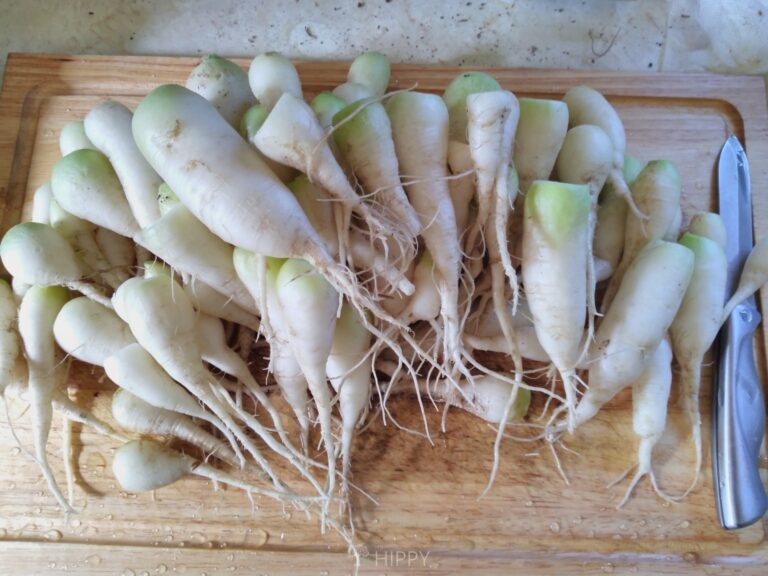
While other crops may take upwards of 100 days to produce a harvestable crop, the humble radish typically only takes about 4 weeks. With such a short growing season, it’s easy to try new varieties each time you plant radish seeds.
This time, I wanted to grow the long radishes that are all white for a unique flare from the garden.
Sure, the Cherry Belle radishes are great, but trying new varieties of crops is one of the best things about growing your own food on the homestead! You probably won’t find these in the grocery store.
White Icicle radishes are quite unique to behold. In fact, many people assume they’re carrots – more on this below.
The taste and texture is similar to a carrot but with the trademark spicy, piquant flavor that you’ll only get with a radish.
Plus, these tasty tubers are super quick to mature – meaning you’ll have a harvest in no time!
About The White Icicle Radish
When people think of radishes, they probably envision the red bulb-like root vegetable. While that certainly is the most common appearance of commercial radishes, the White Icicle radish is a bit different.
These radishes are all white and are more long and tubular than other radish varieties. These white roots can stretch to 5-6 inches in length and appear more like a carrot than the typical radish.
My wife and kids actually thought I had planted white carrots when I first started harvesting these!
They do great in cool weather seasons, although they can grow in the summer if shade is provided to keep them from bolting (going to seed). My crop started to bolt before I was able to harvest them all, as you can see here:
We are in Zone 9a, so my crop was planted in late February and was ready for harvest about 30-35 days later. If you plant them in warmer months, expect them to be ready for harvest between 25-30 days instead.
These radishes originated in the United States in the 19th century. An heirloom radish, it was once considered a novelty item.
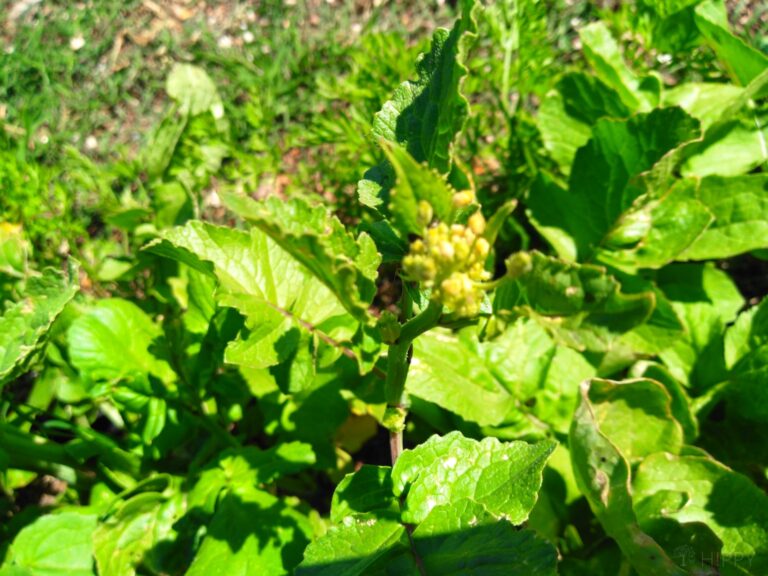
Growing Conditions
White Icicle radishes are hardy in zones 3-12. Since they mature so quickly, you could realistically plant a new crop every two weeks for a continuous harvest.
That said, they don’t love the heat. If your summer temperatures get quite warm, you may want to avoid planting in the heat of summer and take a break.
Wait to plant until the end of summer for a fall harvest. White Icicle radishes are more tolerant of the heat of summer, but are still cool-season crops.
These radishes can often be stored – just plant two months before the first expected frost and you’ll be able to produce a super sweet batch of radishes that will hold up for several weeks in cold storage.
You can harvest radishes when they’re anywhere beyond five inches in length. The flavor will be strongest in small radishes.
The soil needs to be consistently moist and fertile. You should choose a location that receives lots of bright sunlight for your radishes.
If you plan on saving seeds, know that radishes will cross-pollinate with all other kinds of radishes.
Therefore, if you’re growing other types of radishes in addition to White Icicles, you will need to operate them by at least half a mile to protect the genetics and ensure that your radishes remain true to seed when you replant later on.
Preparing Your Garden Bed
Radishes do best in garden beds free from large rocks and compacted soils. If you prefer to till your garden, remove large rocks, debris, and clay so the radish roots can reach far without hindrance.
I personally have a no-till garden so my garden beds are 6+ inches on uncompacted high-quality garden soil and compost, meaning my preparation for planting was simply clearing any plant debris leftover from the previous crops.
If you don’t prepare a loosened area, your radishes will be stunted and you will probably be disappointed in how small they are and how much harder they are to harvest without breaking.
Adding the compost to your soil before planting will ensure that your radishes have all the nutrients they need to grow – but you won’t run the risk of over-fertilizing later in the season.
Adding too much fertilizer at the wrong time can lead to radishes that have lots of full, bushy green growth up top, but very little in the way of roots down below.
And after all, it’s the roots that we’re after!
Direct-Seeding
Sow the seeds about ½ inch deep.
You can plant them close together, but they will grow best when rows are spaced about 6 inches apart and each plant in the row is spaced 2-3 inches apart.
Seeds that grow too close together stunt each other’s root growth and the resulting radishes are much smaller than they could have been.
When you sow your radish seeds, ensure to keep them evenly moist until they germinate and the first leaves set above ground. I utilize soaker hoses in my garden and turn them on to keep the garden beds as moist as I need them to be.
If you are sowing your radishes seeds along with other crops, make sure to give each crop enough space. For example, I seeded a row of White Icicle radishes between two rows of carrots:
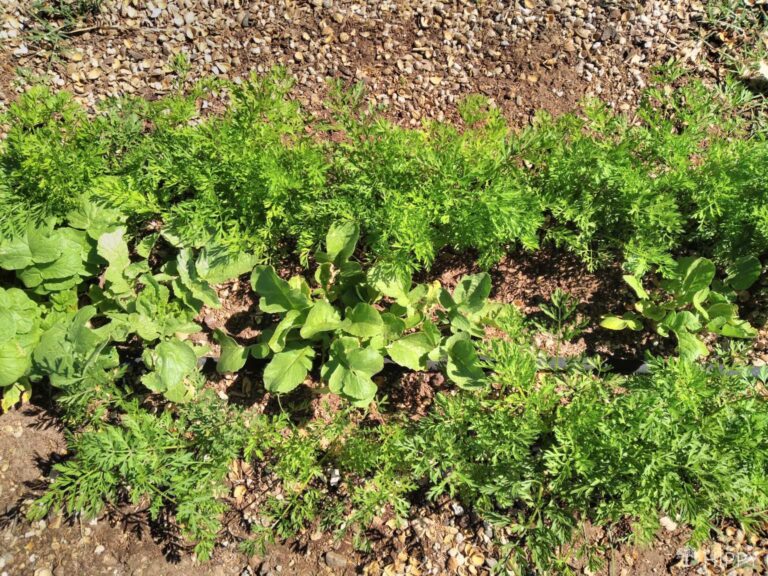
Since carrots take 75 days to mature, I knew that the spacing wouldn’t become an issue because the radishes would be harvested before the carrots became large enough to require the extra space taken up by the radishes.
Keep this kind of thing in mind if you are interplanting radishes into established crop rows as well.
For example, if I was to sow radishes in the summer, I’d like to put them below my tomato rows to use the shade to keep them from bolting and to suppress weed growth around the tomatoes.
But, sowing them too close to the tomatoes could cause the radishes to grow into the root structure of the tomatoes and damage the crop.
These little intricacies will be what separates a great interplanted garden from a failed space of cramming too much in a small space!
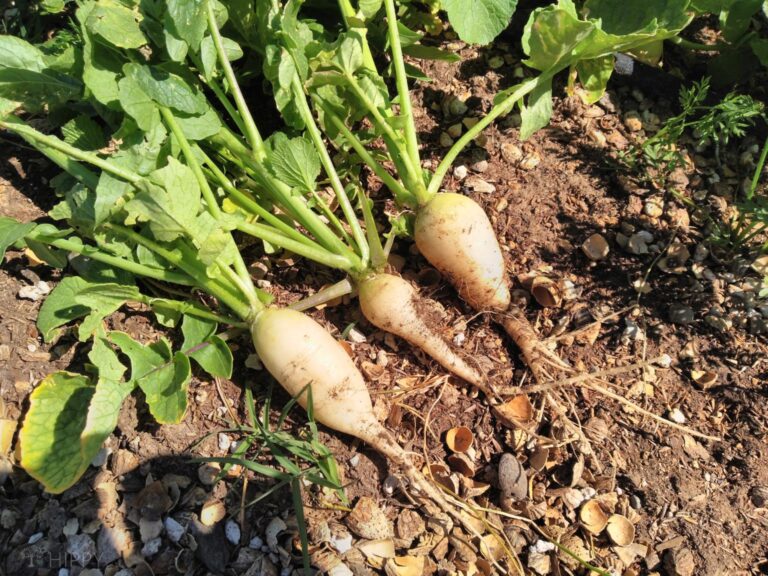
Can You Transplant White Icicle Radishes?
In most cases, White Icicle Radishes cannot be transplanted.
While you can save seed for up to five years (it remains viable for quite some time), there’s no real advantage to starting radishes indoors.
As root crops, they are very difficult to transplant into the garden with any measure of success. Most of the time, your plants will die before you see any results.
The only time this can work is if you start seeds in peat pots. That way, the pots can break down around the radishes, fertilizing the soil as the plants grow.
You won’t have to worry about pulling the plants from the container and potentially damaging their fragile roots. You can just put the whole thing into the ground.
There’s no real advantage to starting seeds early indoors. Not only can radish plants take frost (you can start your seeds up to six weeks prior to the last expected frost date) but they grow so quickly, you won’t be gaining much by starting indoors.
Plus, if you start in peat pots, the seeds of radishes are so small that you’ll likely have difficulty planting one per pot – you’ll have to thin them anyway.
So while you can transplant radishes if you start seeds indoors, it doesn’t really make sense to – you will just be making more work for yourself!
Care During The Growing Season
Here are some tips to help you care for your White Icicle radishes from seed until harvest.
Watering
It is important to water our plants immediately after planting.
Saturate the soil to a depth of at least six inches, ideally by using a hose with a spray nozzle on a fine setting so you don’t wash the seeds out of their rows in the soil.
Until the seeds sprout, it is imperative that you keep the soil evenly moist. Then, you can water just whenever the top quarter inch of soil feels dry to the touch.
Feritlizing
An evenly balanced garden soil/compost mix is all that is needed for White Icicle radishes. Too much nitrogen will cause more leaf growth and reduce root growth.
While the leaves are certainly edible on the White Icicle radish, they aren’t as tasty as the roots. I simply used the majority of the tops as treats for my cows, chickens, and pigs.
Instead of applying fertilizer during the growing season, just add fertilizer before planting. Again, compost is a good idea, but a pound of 16-20-0 or 10-10-10 synthetic fertilizer should do the trick, too.
In many cases, the best radish fertilizer is no fertilizer at all. The soil should be relatively low in nitrogen to prevent the issue with leaf growth that I mentioned above.
You can add materials to make your soil looser and less heavy, however. You can add leaf mold, which opens up the soil so roots can develop.
You can also improve the texture of clay soil by adding powdered gypsum, which will leave more room for nutrients and water to permeate.
Weeding
If you have a weedy garden bed, keep them at bay for the 4-5 week growing period. Other than that, there isn’t much to grow radishes successfully. They are a beginner-friendly crop!
Once your radish seeds sprout, be extra vigilant about weeds. Weeds will steal moisture and nutrients from your developing plants.
As soon as they sprout, thin the radish seedlings. You want to ensure a spacing of around one inch between each plant, so you can pull the weakest seedlings to accomplish this.
Pests and Diseases
The short growing season typically reduces pest and disease pressure to nil, especially if you rotate your crops regularly. However, there are a few pests and diseases to watch out for (see more on this below).
Most radish diseases are fungal in nature. Damping-off, also known as wirestem, is common when humidity is high.
To avoid this disease, which causes the rot of seedlings before they germinate or even the total failure of seedlings to thrive, you should not plant seeds in cold, wet soil. Make sure it is well draining.
Other fungal diseases include Septoria leaf spot, Fusarium rot, downy mildew, black root, alternaria blight, white rust, scab, and clubroot.
All of these (with the exception of scab, which is bacterial) are fungal diseases. You can avoid them by planting certified disease-free seed and rotating crops.
When your water, do so first thing in the morning so that the foliage has plenty of time to dry off before nightfall.
Thinning your seedlings so that there is more room for air to get around and circulate around your plants can help, too.
To avoid fungal diseases, harvest your radishes before they’re the maximum size. THey’ll taste better and you can prevent the likelihood of cracking, which can invite fungal disease.
There are a few types of insects that are not only pests to radishes but also can introduce disease.
Leafhoppers spread aster yellows, a disease that causes leaves to curl and yellow while also stunting plant growth. Aphids can spread leafroll virus.
Other common insect pests include cabbage loopers, harlequin bugs, flea beetles, and cutworms.
Do your best to prevent these pests – the same tips you’ll read for preventing disease typically apply for pests, too. You can water early in the morning, and weed carefully around plants to reduce insect hiding spots.
Rotate your crops and use collars to protect from pests like cutworms. You can also use floating row covers to keep pests off your plants.
Companion Planting (and What to Avoid)
There aren’t very many plants that don’t benefit from being planted near radishes – using the White Icicle radish as a companion plant is a great idea.
These plants are quite tolerant of interplanting, a practice in which you use radishes to mark the rows between other kinds of plants. Since they mature so quickly, it’s easy for you to see where the rest of your garden has been planted.
Peas and leaf lettuce can be planted alongside radishes. The lettuce and peas grow more slowly than the radishes, so you’ll be able to harvest the radishes just in time for the other plants to begin to sprawl.
You can grow radishes with other slow-maturing crops like peppers and tomatoes, too.
Radishes can help repel cucumber beetles, so they make good companions for cucumbers along with other squash plants. Radishes benefit from strong-smelling herbs, plants in the allium family (like onions) and nasturtium.
Be careful about planting radishes near any other plants in the brassica family, like broccoli or cauliflower. Radishes have the potential to attract flea beetles. Hyssop is another plant you should avoid planting with radishes.
Growing White Icicle Radishes in Containers
If you don’t have a lot of room in the garden (or if you don’t have a garden at all!) The good news is that it’s still possible for you to enjoy these tasty vegetables at home.
You can easily grow them in containers! You’ll just need a pot that is at least 12-14 inches deep and three to four inches wide.
The wider the pot, the more plants you can grow – a 12-inch wide pot should allow you to grow up to seven radish plants or so.
Rather than sowing radishes directly in the garden, sow your seeds in your desired pots. They should be planted about ¼” deep and an inch apart.
The seeds should germinate in three to ten days. Thin them so that they are two inches apart. Since you’re growing in containers, you can sow seeds at virtually any time of the year.
Put your radish container in a sunny location – it should receive around seven hours of direct sunlight each day.
The soil in your container should be a potting soil that is well-draining and permeable. Water regularly and you should be able to harvest in just a few weeks!
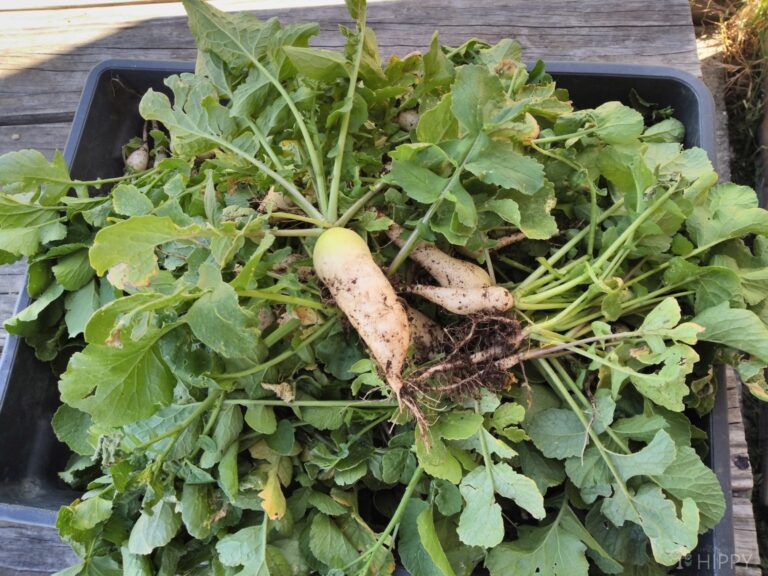
Uses In The Garden
Radishes, like the White Icicle, aren’t a favorite food of the family. But, we do eat them in salads, stews, soups, and when lacto-fermented.
However, I can grow 100x the amount of White Icicle radishes than we need in just a few dedicated rows.
Instead, we opt to use them as interplanting companions for the most part. This crop was planted between carrots and kept weeds at bay as those slow-to-grow carrot seeds took weeks to germinate.
Then, the harvest fed us and the family and gave my carrots a nicely loosened bed to thrive in.
They go great when planted with the majority of garden crops. Plant them among carrots, lettuce, leeks, spinach, tomatoes, and strawberries for interplanting success!
Uses For The Radishes
As I mentioned, salads, soups, and stews are awesome for using White Icicle radishes. The crispy crunch and the occasional spicy flavor profile of radishes add depth to boring dishes.
Fermenting them is also a great idea to create a probiotic-rich vegetable with a long shelf-life.
We like to use everything we can on the homestead, so the leaves can be used in salads and stir-frys as well.
Or, if you have livestock like us, utilize the green tops to feed cattle, chickens, pigs, rabbits, etc. They were all sad when I ran out of these tasty treats to feed them so I’ll be planting more soon enough!
White Icicle Radishes Are Definitely worth a Try
The White Icicle radish is great fresh on salads, cooked in soups and stews, and perfect for a tangy fermented food to boost the health-promoting properties of vegetables.
They are incredibly easy to grow and the majority of my livestock on the homestead love them just as much as I do, so I can seemingly grow infinite White Icicle radishes and feed the whole farm!
If you have a little extra space in the garden this year, grab yourself White Icicle radish seeds, and start planting.
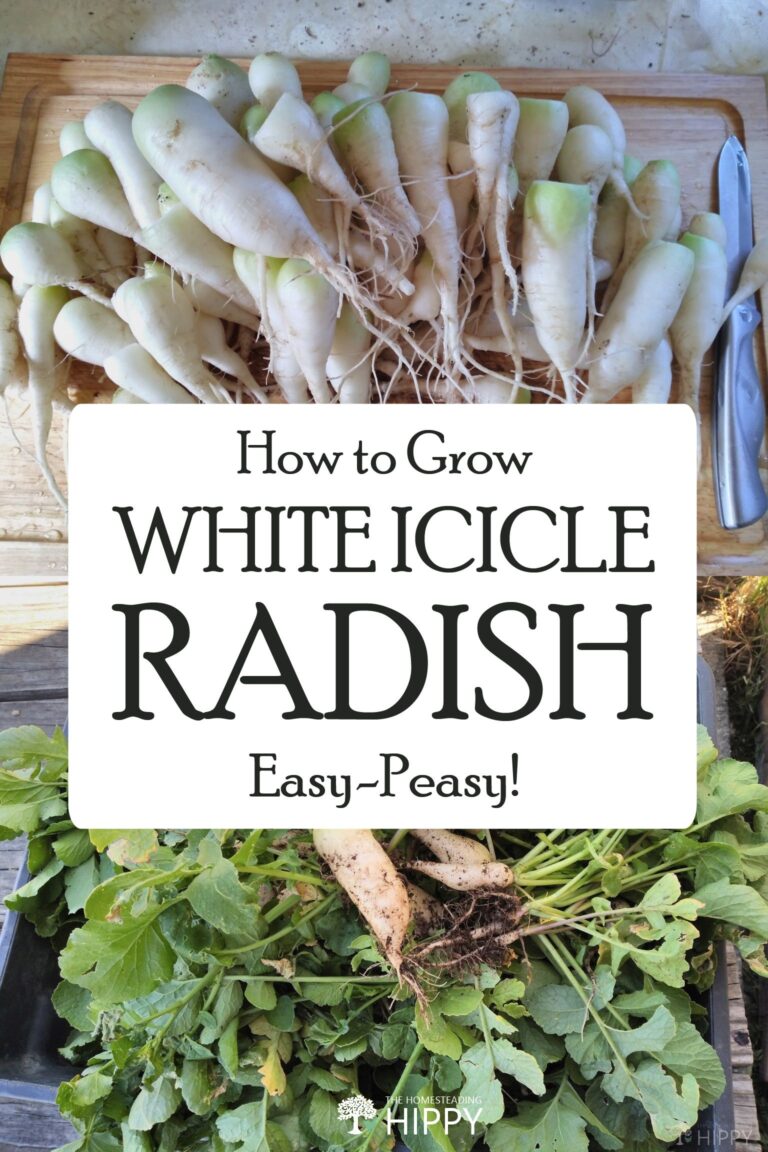

Milo Martinovich is a small-town guy who has been focused on a healthy lifestyle for the majority of his life. Through a career in Personal Training, he became engulfed in the world of healthy nutrition, which led him to grow and raise his food, and finally, to full-fledged homesteading! Find out more bout our team members.
